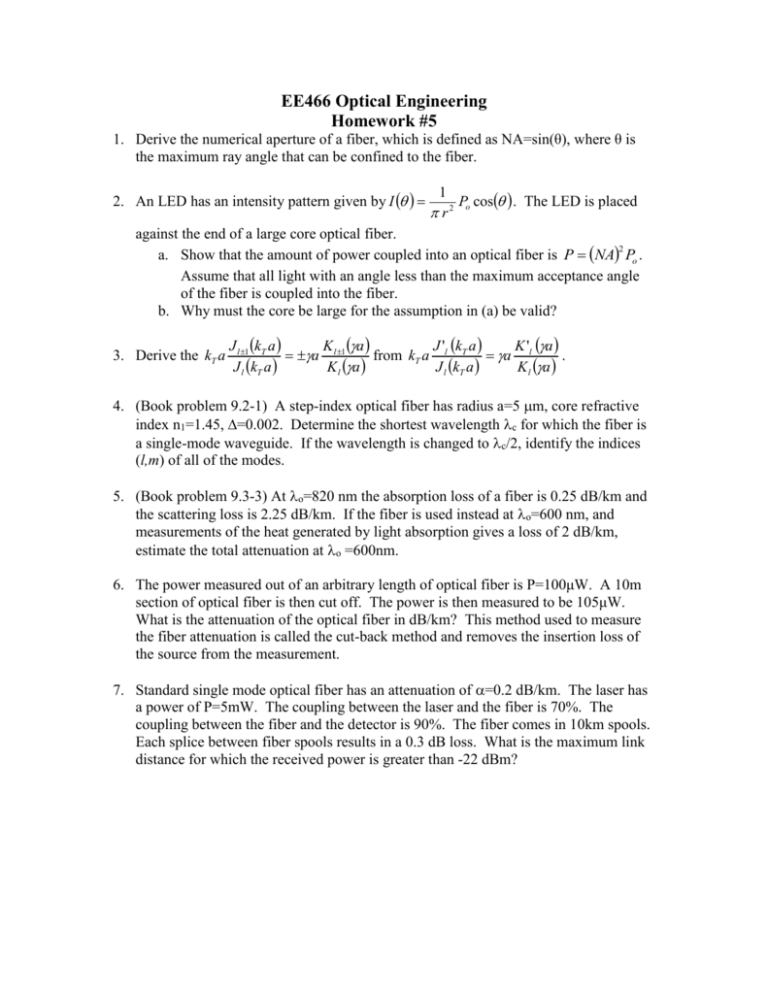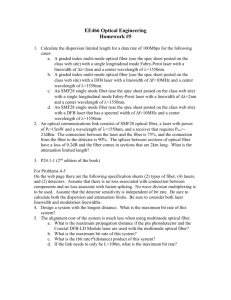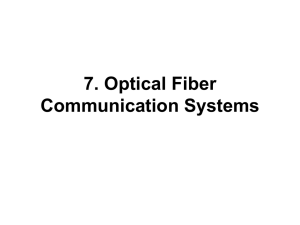EE466 Optical Engineering Homework #5
advertisement

EE466 Optical Engineering Homework #5 1. Derive the numerical aperture of a fiber, which is defined as NA=sin(θ), where θ is the maximum ray angle that can be confined to the fiber. 2. An LED has an intensity pattern given by I 1 P cos . The LED is placed r2 o against the end of a large core optical fiber. 2 a. Show that the amount of power coupled into an optical fiber is P NA Po . Assume that all light with an angle less than the maximum acceptance angle of the fiber is coupled into the fiber. b. Why must the core be large for the assumption in (a) be valid? 3. Derive the kT a J l 1 kT a K a J ' k a K ' a a l 1 from kT a l T a l . J l kT a K l a J l kT a K l a 4. (Book problem 9.2-1) A step-index optical fiber has radius a=5 m, core refractive index n1=1.45, =0.002. Determine the shortest wavelength c for which the fiber is a single-mode waveguide. If the wavelength is changed to c/2, identify the indices (l,m) of all of the modes. 5. (Book problem 9.3-3) At o=820 nm the absorption loss of a fiber is 0.25 dB/km and the scattering loss is 2.25 dB/km. If the fiber is used instead at o=600 nm, and measurements of the heat generated by light absorption gives a loss of 2 dB/km, estimate the total attenuation at o =600nm. 6. The power measured out of an arbitrary length of optical fiber is P=100μW. A 10m section of optical fiber is then cut off. The power is then measured to be 105μW. What is the attenuation of the optical fiber in dB/km? This method used to measure the fiber attenuation is called the cut-back method and removes the insertion loss of the source from the measurement. 7. Standard single mode optical fiber has an attenuation of =0.2 dB/km. The laser has a power of P=5mW. The coupling between the laser and the fiber is 70%. The coupling between the fiber and the detector is 90%. The fiber comes in 10km spools. Each splice between fiber spools results in a 0.3 dB loss. What is the maximum link distance for which the received power is greater than -22 dBm?









